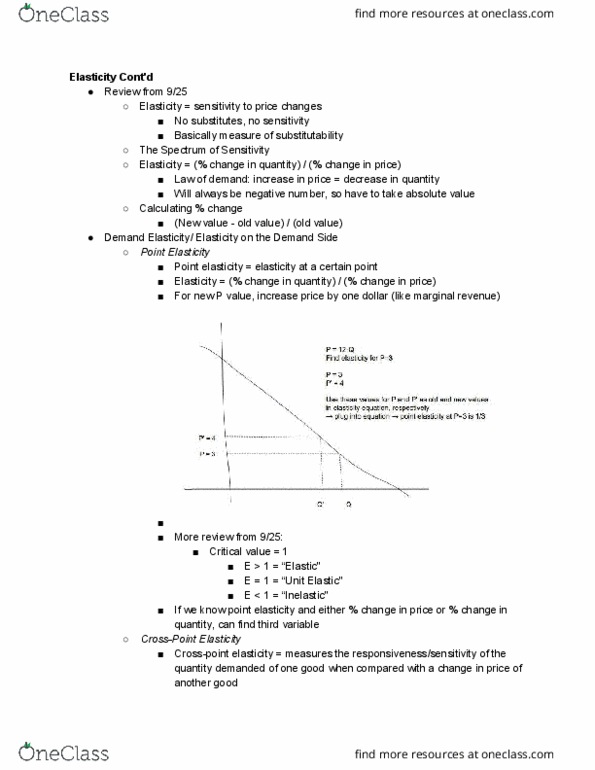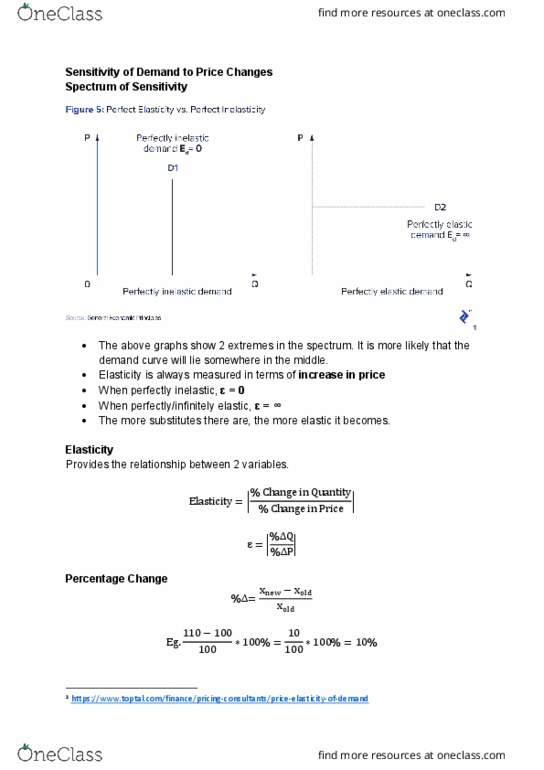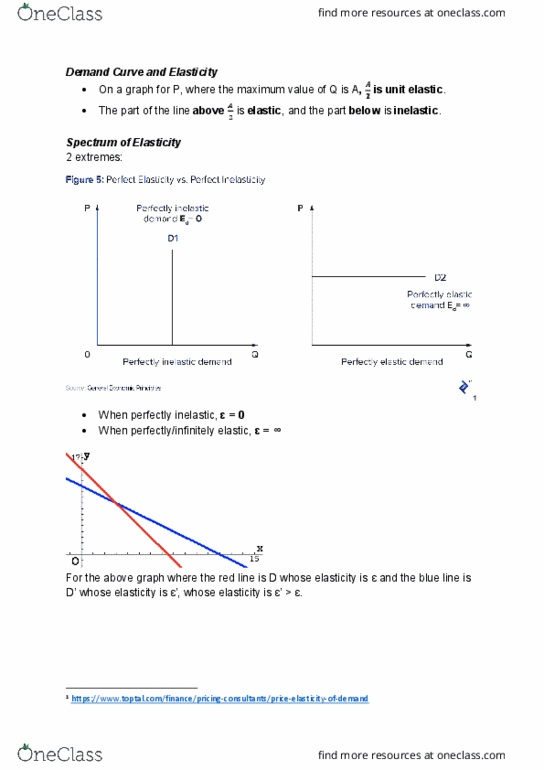ECON 1011 Lecture Notes - Lecture 11: Demand Curve, Qi, Normal Good
ECON 1011 verified notes
11/30View all
Document Summary
Spectrum of sensitivity: the above graphs show 2 extremes in the spectrum. Therefore 13 is the point elasticity at point (3,9) (p = 3, q = 9). If = 1, it is unit elastic. In this case, 1/3 < 1, therefore the point elasticity is inelastic. Where a is the first good and b is the second. Therefore, as the price for c increases, the demand for ti increases. If xp > 0, the 2 goods are substitutes. If xp = 0, the 2 goods are unrelated. If xp < 0, the 2 goods are complements. Note: never answer any question on cross-price elasticity with elastic or inelastic. Note: never take absolute value of cross-price elasticity. Compare to critical values of 0 & 1. If i 0, it is a normal good. If i < 0, it is an inferior good. If i > 1, it is a normal good (luxury) (particularly susceptible to changes in income).









